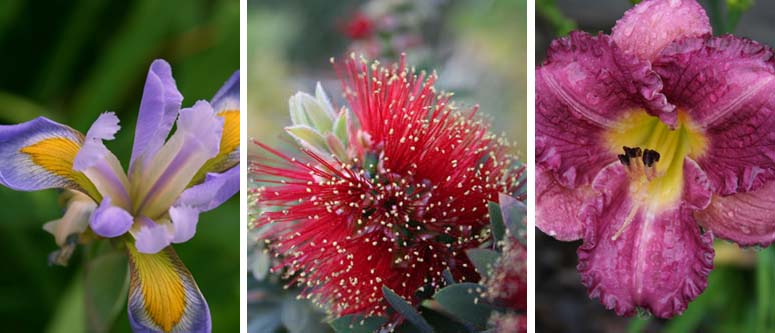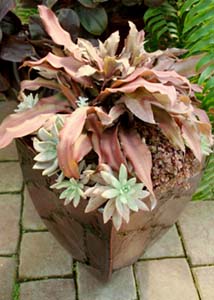Gardens are wonderful places for pets. They provide entertainment, room to exercise and cool shade in the afternoon. However, many of the most common and seemingly innocuous garden plants are also poisonous to your furry friends.
The apples and oranges we humans enjoy, almost all flowering bulbs, and some of the most popular houseplants all share one thing in common: They are dangerously toxic to cats and dogs.

Plants ranked eighth on the American Society for the Prevention of Cruelty to Animals’ (ASPCA’s) list of top pet toxins in 2014, and of the roughly five percent of calls made to the organization’s Animal Poison Control Center that involve plants, most were regarding houseplants rather than those grown outdoors.
Before we even cover the poisonous plants, let’s focus on the biggest dangers. Insecticides ranked third on the ASPCA list, and lawn and garden products came in tenth. Keep all chemicals out of reach, and if you’re getting your lawn sprayed, allow at least a day before letting your pet on the grass.
Problem plants for pets
Many plants are poisonous or otherwise dangerous to pets, but luckily there are many more that are completely safe. Here are some toxic plants to avoid, followed by safe alternatives. This list is just an introduction and is by no means exhaustive, so refer to the ASPCA website to search for the plant in question.
| Plant type | Toxic | Non-toxic |
|---|---|---|
| Bulbs | Caladium, calla lily, tulip, daffodil, iris, narcissus, crinum, amaryllis, dahlia, lily of the valley, crocus | Canna, muscari, Scarborough lily, ginger |
| Annuals and perennials |
Arum, elephant ear, begonia, sweet pea, coleus, bird of paradise, cyclamen, hellebore, hosta, lantana, chrysanthemum, morning glory, asparagus fern, geranium. Lilies and daylilies are toxic to cats, but non-toxic to dogs. | Aster, fern, marigold, gerber daisy, snapdragon, hollyhock, ornamental grasses, nasturtium, nerve plant, petunia, sunflower |
| Trees and shrubs |
Holly, rhododendron, azalea, oleander, sago palm, citrus (lemons, oranges, etc.), apple, apricot, peach, cherry, yucca, black walnut, yew, gardenia, nandina, wisteria | Crepe myrtle, bottlebrush, aralia, hawthorn, pittosporum, mulberry, magnolia, mahonia, rose, hickory, bamboo, banana |
| Vegetables | Tomato, garlic, leek, onion, shallot, grape | Cucumber, squash, melon, okra, zucchini |
| Houseplants | Dieffenbachia, Swiss cheese plant, Chinese evergreen, dracaena, pothos, ficus, anthurium, aloe, desert rose, kalanchoe, snake plant, euphorbia, asparagus fern, schefflera | Calathea, areca palm, cast iron plant, Christmas cactus, spider plant, episcia, false aralia, orchid, bromeliad, peperomia, echeveria, haworthia, sempervivum, gynura, plectranthus |
If you’re unsure of the toxicity of a certain plant in your garden, refer to the ASPCA website to make sure that it checks out.

Safety steps
While you needn’t tear apart your garden to keep poisonous plants off your dog’s menu, you should definitely educate yourself so you can make your own informed decisions.
Either remove risky plants, transplant them to pet-free areas of the garden, or if the plant is too big (or special) to easily remove, consider making it inaccessible to your pet with fencing.
Just remember that even fallen leaves or seedpods are also often poisonous, so acquaint yourself with the symptoms your pet might experience following ingestion so you know what to tell the vet.
You might not need to go out and remove a foundation planting of azaleas tomorrow, but it isn’t that big of a deal to replace your toxic aloe plant with a non-toxic (and more attractive) haworthia.
If your pet shows any worrying symptoms, don’t waste time looking at lists like these. Call your vet or visit the ASPCA poison control hotline website immediately.
Related:
- Winning the War on Pet Hair
- Can Houseplants Really Clean the Air?
- How to Ensure Your Dog Is a Good Neighbor
Note: The views and opinions expressed in this article are those of the author and do not necessarily reflect the opinion or position of Zillow.
Originally published June 25, 2015.
The post Keeping Pets Safe Around Plants appeared first on Zillow Porchlight.

